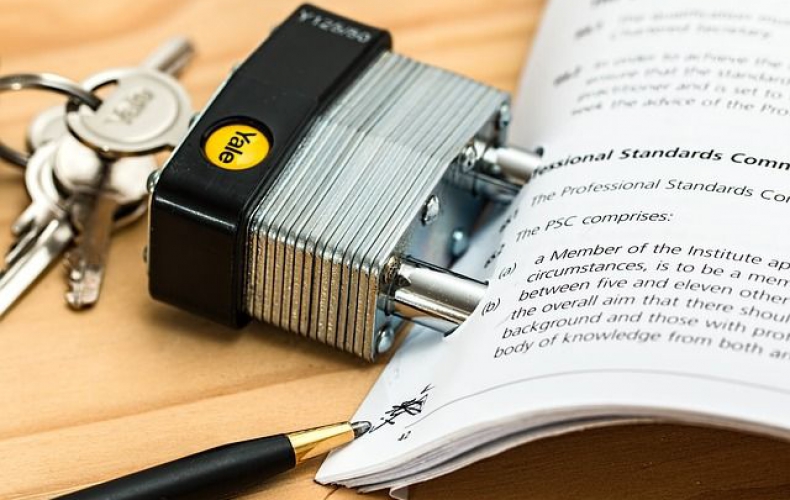How to Ensure Your Liability Waiver is Enforceable

Waivers are only useful when they’re enforceable. Learn about mistakes that could render your release of liability waiver useless, and how to avoid them.
Every company that operates with some form of liability has unique waiver needs. Depending on the type of business, your waiver will need to contain some type of exculpatory language as well as exculpatory clauses that free your business from liability.
If you’re just getting started, and are confused about whether to use a personal injury waiver form, release of liability waiver, or something else entirely – you’re not alone.
The most important aspect of your liability waiver is that it’s enforceable. Customers may not read through them when they put down their signature, but businesses need to know that the form their customers are signing is rock solid against personal injury claims. Here are some resources that will help ensure that your liability waiver is completely enforceable in a court of law.
What are the general best practices of a liability waiver?
In order to ensure your waiver is enforceable, follow these best practices.
Laws related to liability waivers change state by state, so start by looking up the rules that govern your jurisdiction. Before your customers even sign the waiver, ensure that they are who they say they are. Check and double-check their ID.
Don’t rush your customers or clients, and give them plenty of time to sign the liability waiver. If they’re taking part in an activity where they may not have their ID on them, it may be useful to send them the waiver in advance.
Within the form itself, the language should always be clear and needs to be easily understood by the average customer. Courts do not look favorably on confusing liability waivers.
How do I make sure my wording is precise and most likely to protect me against legal action in the case of an injury?
Laws regarding negligence and liability change on a regular basis, so it definitely pays to review your liability waivers often. You may find that a previous form that a person had signed which would waive their right to sue for negligence is no longer enforceable due to recent updates to related laws.
To ensure their legality, all waivers need to contain key elements like an exculpatory clause, an indemnity clause, and an assumption of risk.
The exculpatory clause removes liability from one party during the course of the contract and waives the right to sue for negligence.
The indemnity clause transfers responsibility for liability due to loss or damage from the business to the person signing the contract.
The assumption of risk shows that the person signing the contract agrees to assume the risk inherent to the activity that they will participate in.
All of these are critical elements to ensure that a contract is legally binding and can protect your business from legal action.
Am I fully protected from negligence even with the correct clauses?
There are two types of negligence relevant to businesses. Ordinary negligence is defined as the ordinary actions that any thinking person would take to limit harm. Normal acts that limit ordinary negligence can include anything from buckling up your seatbelt to putting up clear warning signs around areas with potential hazards.
Gross negligence is a wanton disregard for the safety of others. Unlike ordinary negligence, which can be prevented by taking simple actions, gross negligence involves carelessness and disregard for human life on a much grander scale.
Typically, most liability forms contain clauses that release the business from ordinary negligence claims. However, it’s unlikely that you will be protected from gross negligence claims even if the customer or participant signed a waiver.
Common Mistakes to Avoid
When you’re first starting to offer liability waivers, navigating the necessary clauses and language can be confusing. Don’t fall victim to some of these common mistakes.
Writing your own release of liability waiver
As tempting as it may be, you should never write your own liability waiver. Unless you’re a fully qualified lawyer with experience in this area, it’s likely that you’ll omit critical language that puts your business at risk for lawsuits.
Burying the release in tiny writing
Liability waivers should be easily read and understood. Don’t bury the liability release at the bottom of your waiver in tiny writing. It’s your responsibility to ensure that your customers can read it clearly, and understand it fully. Otherwise, it may not be legally binding.
Allowing employees to intimidate or coerce participants or customers into signing your liability waivers
A mistake that many businesses make is pressuring employees to get liability waivers signed. This pressure could lead to employees rushing customers into signing the waivers even if they’re uncomfortable or unsure. Even doing something as simple as mentioning an increased wait time for other participants, or a larger fee for the delay could be construed as coercion.
Use Best Practices to Ensure Your Liability Waiver is Enforceable
Without a waiver that’s enforceable, you leave your business vulnerable to lawsuits and personal injury claims. If you’re unsure about the legality of your waivers or worry that they might be out of date, take some time to review them.
After you’re sure that your waiver works for your business, make signing liability waivers easy for your staff with WaiverForever. Our service quickly saves all the waivers to your secure account where you can easily access them at any time.
WaiverForever is an easy way to sign and store liability waivers and offers lots of resources for all your waiver needs. To learn more about our features, click here.